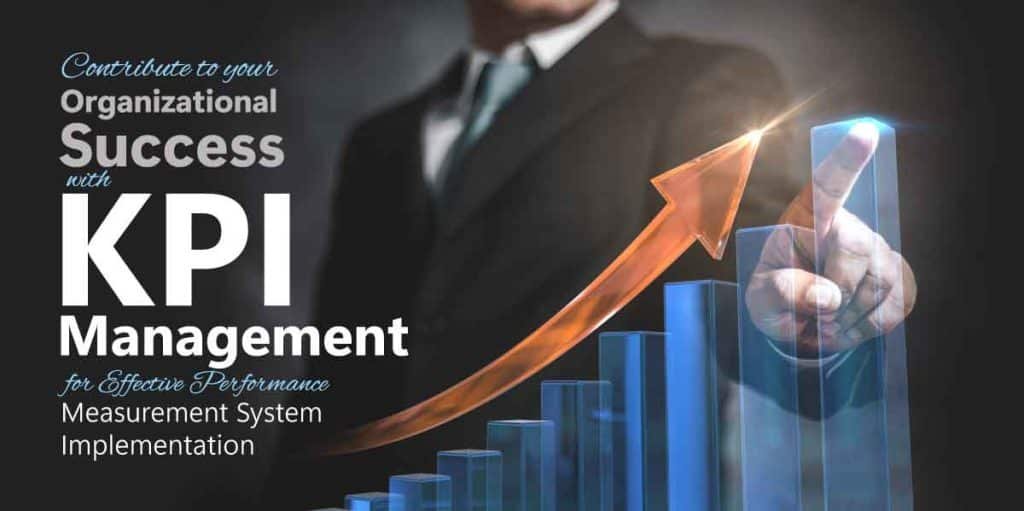
What is a KPI - Key Performance Indicator?
Streamlining Your Business Goals and Organizational Performance with Effective Key Performance Indicators (KPIs) Management
What is the KPI - Key Performance Indicator?
KPI stands for key performance indicator which is a quantifiable measure of performance used to determine how well a company or business is performing to achieve its specific goals. KPIs are employed by companies to assess their performance and success rate for achieving targets. Managers and team leaders can set out a number of key performance indicators to measure the performance of teams and individual employees.
KPIs can be qualitative and quantitative and can be utilized to assess multiple areas of businesses, for eg. finance, accounts, marketing, sales, customer service, operations etc. It is critical when it comes to evaluating the success of a business and identifying the weak areas and bringing in changes for improvement accordingly.

Different Types of KPIs
The main objective behind KPIs or Key Performance Indicators is to provide strategic insights to business leaders and help them with informed decision-making, thus, leading to high performance by teams for achieving company targets.
KPIs are of different types. Some help business teams with long-term goals while others are fit for short-term objectives. The most commonly used KPIs by corporates to measure their performance and help their businesses move at a strategic pace are the following
1. Quantitative Indicators
Regarded as the most straight forward KPIs, quantitative KPIs represent data in numeric values like for instance, whole numbers, ratios, percentages, decimals and fractions.
2. Qualitative Indicators
On the other hand, qualitative indicators are KPIs represented through independent statements and/or textual data such as surveys, feedback forms, questionnaires, etc.
3. Leading Indicators
Leading indicators are KPIs used to forecast the result of a change in a process based on present and past statistics and data. They help in predicting future outcomes of business processes.
4. Lagging Indicators
Lagging indicators are KPIs used to gauge results and outcomes after an action has already taken place. They are helpful in evaluating the success or failure of processes and initiatives.
5. Input Indicators
Input indicators are KPIs that help in measuring the required resources to produce the desired outcome of a project/initiative. For example, the amount of staff or equipment required to execute a particular task.
6. Output Indicators
Output indicators are KPIs that help reflect upon the work done and its end result that can lead to success or failure. For example, revenue generated or number of new clients acquired.
7. Strategic Indicators
Strategic indicators are KPIs used to track progress towards strategic goals and assess how the company is performing at any given time. For example, market share and ROI. When a Balanced Scorecard is used, strategic measures are employed to assess the company’s progress in attaining its strategic goals as shown by the following four balanced scorecard viewpoints:
- Financial
- Stakeholders and Customers
- Internal Processes
- Organizational capacity
8. Operational Indicators
Operational indicators are KPIs that measure a company’s performance either in terms of its efficiency, productivity, or quality. Companies typically use them to measure performance in a shorter time frame.
Why are KPIs important?
KPI management leads to effective performance measurement system implementation within your organization. From assessing employee performance to tracking company’s growth, KPIs are important for multiple factors:
1. Performance Accountability
The performance KPIs are important for measuring the performance of employees and the impact they create. Performance statistics are critical when it comes to making decisions about the performance of specific employees and teams in general. With KPIs, employers can make sure that everyone is moving in the same direction and are glad to contribute to the organization’s success.
2. Motivation and Encouragement
An effective KPI management system helps team leaders to keep their leadership abreast by motivating other members with the positive results of having met fixed KPIs through their performance. This creates a sense of job satisfaction and feelings of encouragement and motivation within the team members, which ultimately leads to increased collaboration for the progress of the company.
3. Align employees with company objectives
Key performance indicators play a vital role in connecting the mission of the company with the employees. Remember, businesses cannot progress until employees can truly connect themselves. Decision-makers must ensure that the organization’s KPIs are working towards the end purpose and everyone in the company must have a clear vision about why and how they are working towards achieving it.
4. Identify weak points and challenges
Your KPIs should be able to vividly reflect both the areas of success and failure. You will know what the realistic projection of your organization is and which regions require improvement and are at risk.
5. Real-Time Data
KPIs offer a quick summary or report card of your company's overall performance. That knowledge may be an essential component of your efforts to defeat your competitors in this highly cut-throat market. Some companies even use KPIs to externally report their performance and achievement.
It is important to keep in mind that KPIs are not company goals but are a set of quantifiable measurements of those goals. They will help you to see through the gaps that you will need to fill up and help you to make informed decisions that will lead you to your goals faster.
Measuring KPIs – The SMART framework
Replying upon one KPI will never fulfill your objectives. In fact, there is no fixed KPI for businesses. KPIs vary depending upon the type of business the company is doing. Decision-makers must be able to smartly customize their KPIs and keep a constant track of them. Above all, they must ensure that the chosen KPIs are SMART.
The KPIs that follow the SMART strategy are the most effective ones. SMART here stands for Specific, Measurable, Attainable, Relevant and Time-Bound. To put it in simple words, your target should be specific, and you must be able to measure the progress towards your target. It is also important to assess the relevance of your goal to your company and whether it is actually achievable. Last but not least, you should set the timeframe for achieving the target properly.
How to Develop KPIs for your Organization
Too much data and statistics can be overwhelming, which is why it is important that you only measure KPIs that are relevant to your kind of business and its specific objectives. The Key Performance Indicator Professional Certification Program offers a strategic understanding of best practices for performance measures and the right ability to devise and deploy meaningful indicators of success for their organizations.
Some of the proven best practices for developing effective KPIs are as follows:
1. Clear-cut KPIs
KPIs should be able to clearly define the strategic objectives of your organization and everyone in the organization must have a clear understanding of it so that every action is made towards the right direction.
2. Review KPIs Regularly
Remember that you have to review the KPIs from time to time and that you have to replace or adjust them according to changes in your business or customer base. Your KPIs should change as your company's goals do. Regular checking of KPIs against performance is extremely important.
3. Discuss Targets with the Team
It is necessary that everyone in the organization has a clear idea of the target and KPIs, so that they know what to achieve and how to achieve it.
4. Avoid an Overload of KPIs
Organizations now have easy access to data and interactive data visualization, making it simple to measure everything. Remember that the definition of a key performance indicator refers to the most crucial objectives. Avoid KPI overload by concentrating on the most important metrics.
5. Fix Short and Long Term KPI Targets
Decide on your long-term objectives, (either quarterly or annual), and then work backwards to determine the checkpoints (short-term objectives) you must accomplish along the route. This will help you to continuously evaluate your progress and alter your direction as you work toward your larger goals.
Contact us to Register for Key Performance Indicators (KPI Training Course)
Facebook
Twitter
LinkedIn
WhatsApp
Email
Navigating the Supply Chain Certification Maze: Choosing the Right Certifying Body
Whether you are an experienced professional looking to advance your supply chain career or someone aspiring to break into the…
